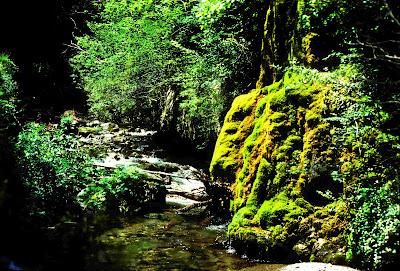A bit further from Arles is the Verdon Gorge, a limestone canyon 15 miles long carved into the countryside by the Verdon River. Its sheer walls plunge a half a mile from the rim to the river. A local there told us that every year numerous people stand on the rim and get vertigo and fall to their deaths.
Getting there takes you through Aix-en-Provence,
a picturesque town with fountains and beautiful architecture. Fountains anchor
the fashionable Cours Marabeau, a tree lined boulevard. Here you can rest at a
comfortable café and look at the magnificent façades, courtyards and fanciful entryways of historic
mansions.
West of Arles is a city that has ties
to people all over the world, Nîmes. “What kind of ties?” you ask.
Linguistic ties. Weavers in Nîmes produced a sturdy twill fabric known as “serge de Nîmes,” denim, in other words. Blue
jeans the world over are made from denim. Nîmes, nestled in the southern part of France, is a city steeped in historical richness. Called Nenmausus by the Romans, it was a regional capitol and home to 50,000 to 60,000 people.
Like so many Roman cities, Nîmes had a huge Amphitheatre that could seat24,000 spectators who came to watch gladiators fight each other and ferocious animals. The ancient ways continue during the Feria de Nîmes when toreadors battle with bulls. 50,000 people consume a great deal of water and Nîmes got its water from a spring 30 miles away. 8 million gallons of water every day flowed over the Pont du Gard. This 3 level bridge was built in the first century and in addition to carrying water it also provided a means to cross the Gard River. At 160 feet tall, it is the tallest of Roman aqueduct/bridges.
Provence is a beautiful part of France and we were so happy to experience it on our first trip outside of Paris.

















































